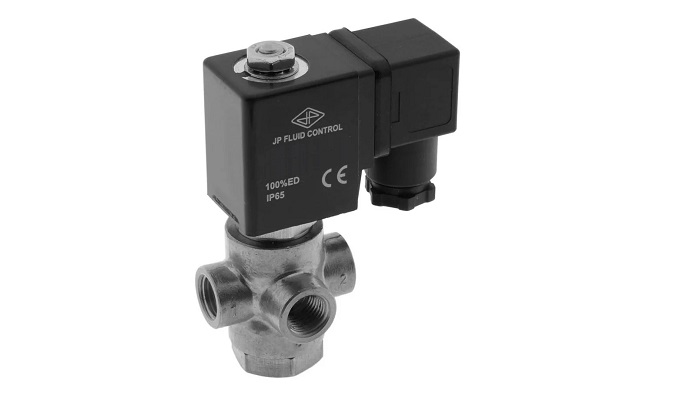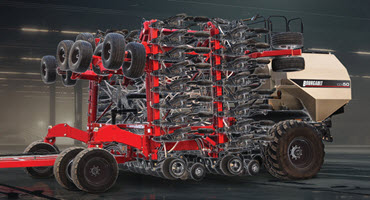The Role of Solenoid Valves in Modern Construction
Solenoid valves, with their ability to precisely control the flow of liquids and gasses, have become indispensable components in various construction applications. From regulating HVAC systems to managing water distribution and ensuring effective fire suppression, solenoid valves offer unparalleled control and automation. Solenoid valves are designed for clean liquids and gasses, offer precise flow control, […] The post The Role of Solenoid Valves in Modern Construction appeared first on World Construction Today.

Solenoid valves, with their ability to precisely control the flow of liquids and gasses, have become indispensable components in various construction applications. From regulating HVAC systems to managing water distribution and ensuring effective fire suppression, solenoid valves offer unparalleled control and automation. Solenoid valves are designed for clean liquids and gasses, offer precise flow control, have rapid response times, boast long service lives, and are versatile across various industries including water treatment, automotive, and food processing. This article explores the fundamentals of solenoid valves, their diverse applications in construction, and addresses common challenges associated with their use.
Solenoid Valve Fundamentals
A solenoid valve is an electromechanically operated valve that controls the flow of liquids or gasses. It consists of a solenoid (an electric coil) and a valve body. When an electric current passes through the solenoid, it generates a magnetic field that actuates the valve, either opening or closing it. This mechanism allows for precise control over fluid flow, making solenoid valves essential in automated systems.
Types of Solenoid Valves
Based on Actuation State
- Normally Closed (NC) Solenoid Valves: In their default state, these valves remain closed. They open when an electric current is applied, allowing fluid to pass through. NC valves are commonly used in applications where the default state should prevent fluid flow.
- Normally Open (NO) Solenoid Valves: These valves remain open in their default state and close when an electric current is applied. NO valves are used in applications where the default state should allow fluid flow.
- Bistable (Latching) Solenoid Valves: These valves maintain their state (open or closed) even when the power is removed. They only require a pulse of electricity to change states, making them energy-efficient and suitable for applications where power conservation is critical.
Based on Circuit Function
- Two-Way Solenoid Valves: These valves have two ports and can either allow or block the flow of fluid. They are used in simple on/off control applications.
- Three-Way Solenoid Valves: These valves have three ports and can direct the flow between two different paths. They are used in applications requiring the diversion of flow or mixing of fluids.
- Four-Way Solenoid Valves: These valves have four ports and are used in complex systems where multiple flow paths need to be controlled. They are commonly used in pneumatic and hydraulic systems.
Applications in Modern Construction
HVAC Systems
In HVAC systems, solenoid valves regulate the flow of refrigerants and control components such as compressors and evaporators. They ensure precise temperature control and energy efficiency, which are essential for maintaining indoor air quality and comfort. Solenoid valves enable automated control of heating and cooling cycles, contributing to the overall efficiency of HVAC systems. The specific uses of solenoid valves in an HVAC system include:
- Chiller Systems: Solenoid valves control the flow of refrigerant in chiller systems, ensuring optimal cooling performance.
- Air Handling Units (AHUs): They regulate the flow of chilled or heated water to the coils in AHUs, maintaining desired air temperatures.
- Zone Control: Solenoid valves enable precise control of temperature in different zones of a building, enhancing occupant comfort and energy efficiency.
Water Management
Solenoid valves are extensively used in water management systems for controlling the flow of water in plumbing, irrigation, and wastewater treatment systems. They provide reliable and automated control, reducing the need for manual intervention and ensuring efficient water usage. In irrigation systems, solenoid valves enable precise control of water distribution, optimizing water usage and promoting sustainable practices. Specific uses in water management include:
- Plumbing Systems: Solenoid valves control the flow of water in residential and commercial plumbing systems, ensuring efficient water distribution.
- Irrigation Systems: They automate the watering process in agricultural and landscaping applications, reducing water waste and promoting plant health.
- Wastewater Treatment: Solenoid valves regulate the flow of wastewater through treatment processes, ensuring effective treatment and compliance with environmental regulations.
Fire Suppression Systems
In fire suppression systems, solenoid valves control the release of fire retardants such as water, foam, or gas. They are designed to respond quickly to fire detection signals, ensuring rapid suppression of fires and minimizing damage to property and life. Solenoid valves in these systems must be highly reliable and capable of operating under extreme conditions. Specific uses in fire suppression include:
- Sprinkler Systems: Solenoid valves control the flow of water to sprinkler heads, ensuring timely activation in the event of a fire.
- Foam Systems: They regulate the release of foam in specialized fire suppression systems, providing effective fire control in high-risk areas.
- Gas Suppression Systems: Solenoid valves control the release of inert gases or chemical agents, providing fire suppression in areas where water or foam is not suitable.
Industrial Automation
In industrial construction, solenoid valves are integral to automated processes, including fluid handling, chemical processing, and material transport. They enable precise control of fluid flow, enhancing the efficiency and safety of industrial operations. Solenoid valves are used in various industrial applications, from controlling the flow of chemicals in manufacturing processes to regulating the operation of pneumatic and hydraulic systems. Specific uses in industrial automation include:
- Chemical Processing: Solenoid valves control the flow of chemicals in manufacturing processes, ensuring precise mixing and reaction control.
- Pneumatic Systems: They regulate the flow of compressed air in pneumatic systems, providing precise control of actuators and other components.
- Hydraulic Systems: Solenoid valves control the flow of hydraulic fluid, enabling precise control of machinery and equipment.
Building Automation Systems (BAS)
Solenoid valves play a crucial role in Building Automation Systems (BAS), which integrate various building systems for centralized control and monitoring. They enable automated control of HVAC, lighting, security, and other building systems, enhancing energy efficiency and occupant comfort. Specific uses of solenoid valves in BAS include:
- Energy Management: Solenoid valves control the flow of energy resources, such as water and gas, optimizing energy usage and reducing costs.
- Security Systems: They regulate the flow of fluids in security systems, such as automated door locks and fire suppression systems, enhancing building safety.
- Environmental Control: Solenoid valves enable precise control of environmental conditions, such as temperature and humidity, ensuring optimal indoor air quality.
Conclusion
Solenoid valves are indispensable in modern construction, offering precise control and automation in various applications. Understanding their types and applications ensures the efficiency, reliability, and longevity of systems. As technology advances, solenoid valves will continue to play a significant role in shaping the future of construction.
The post The Role of Solenoid Valves in Modern Construction appeared first on World Construction Today.

 machineryasia
machineryasia 







